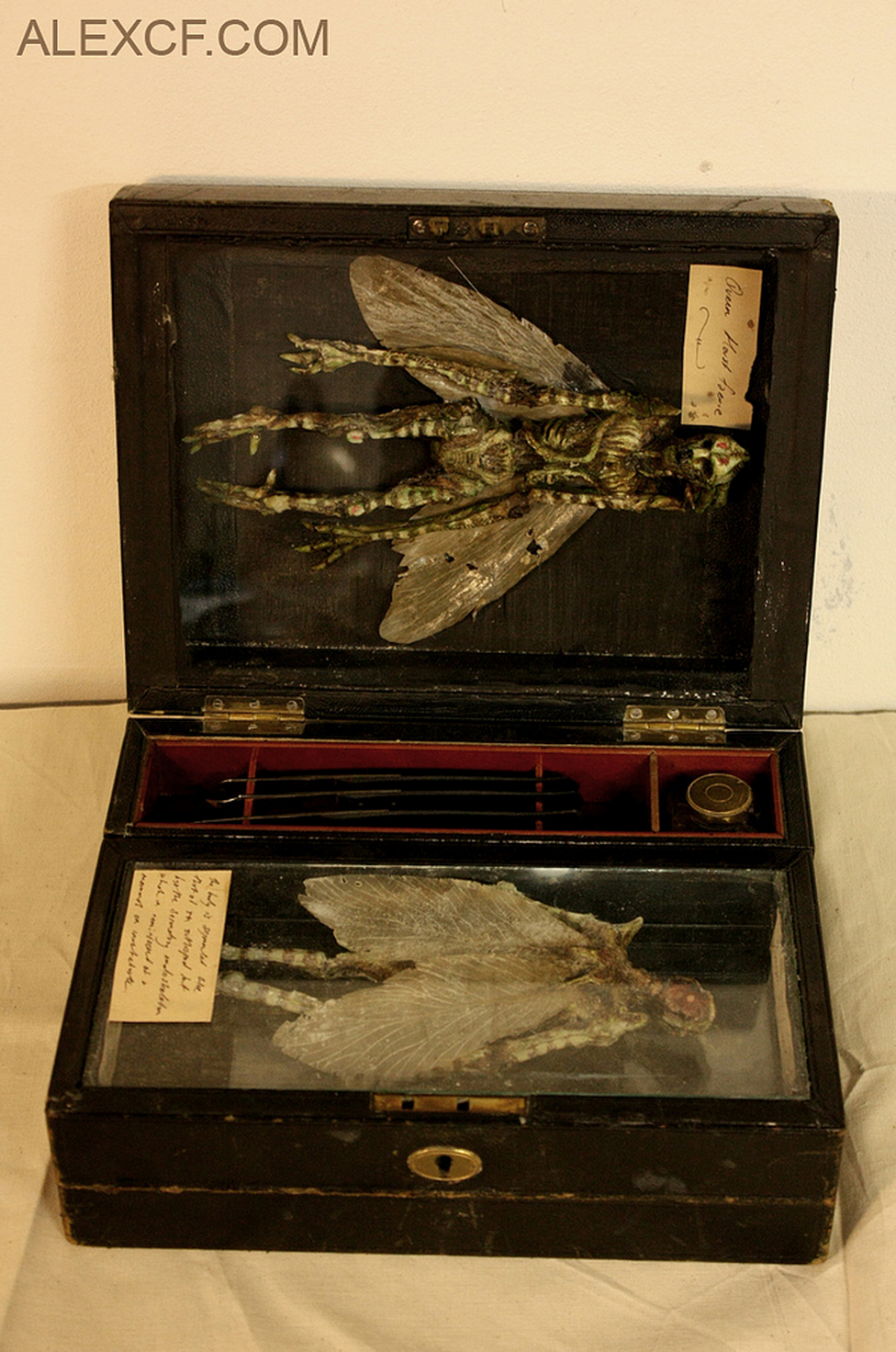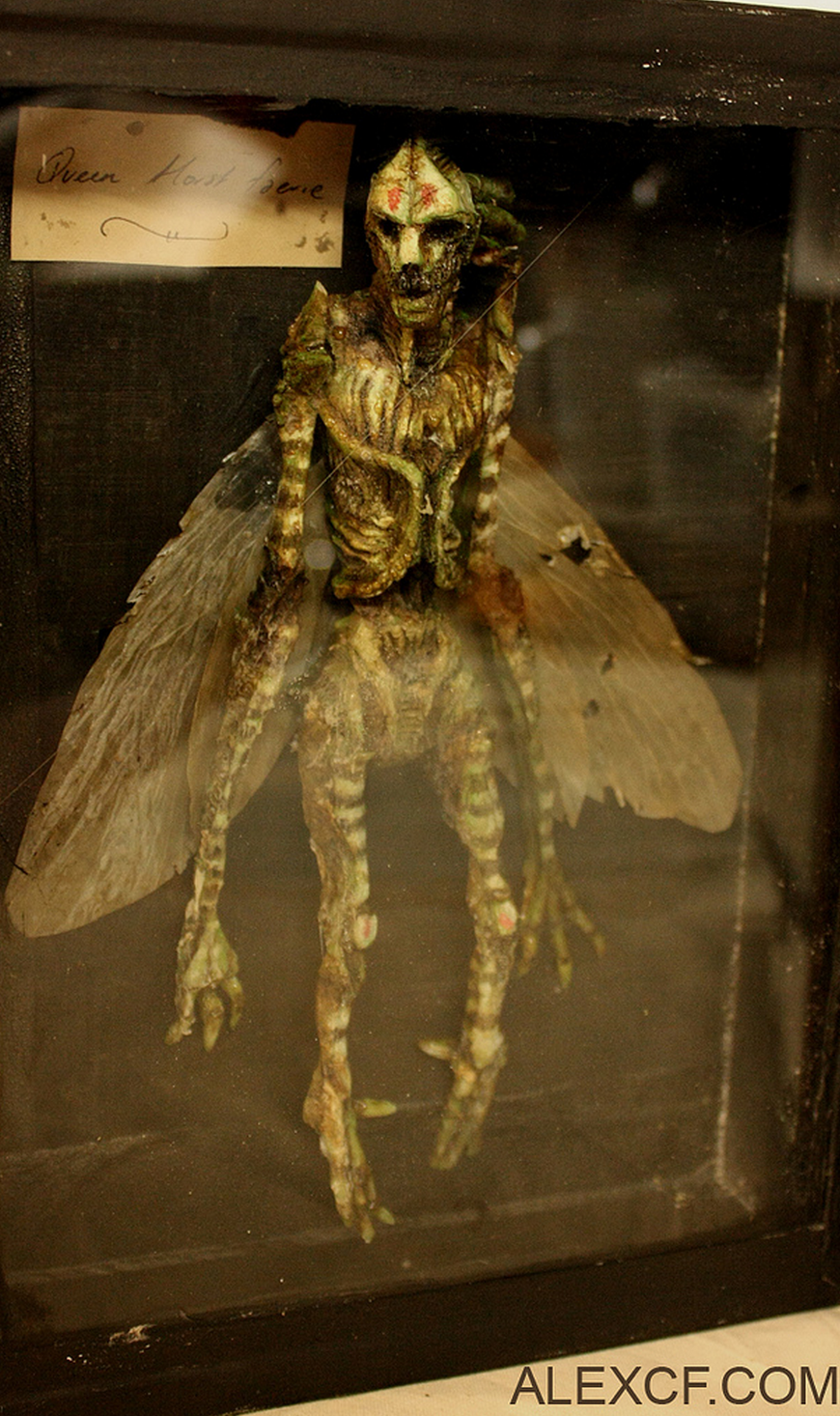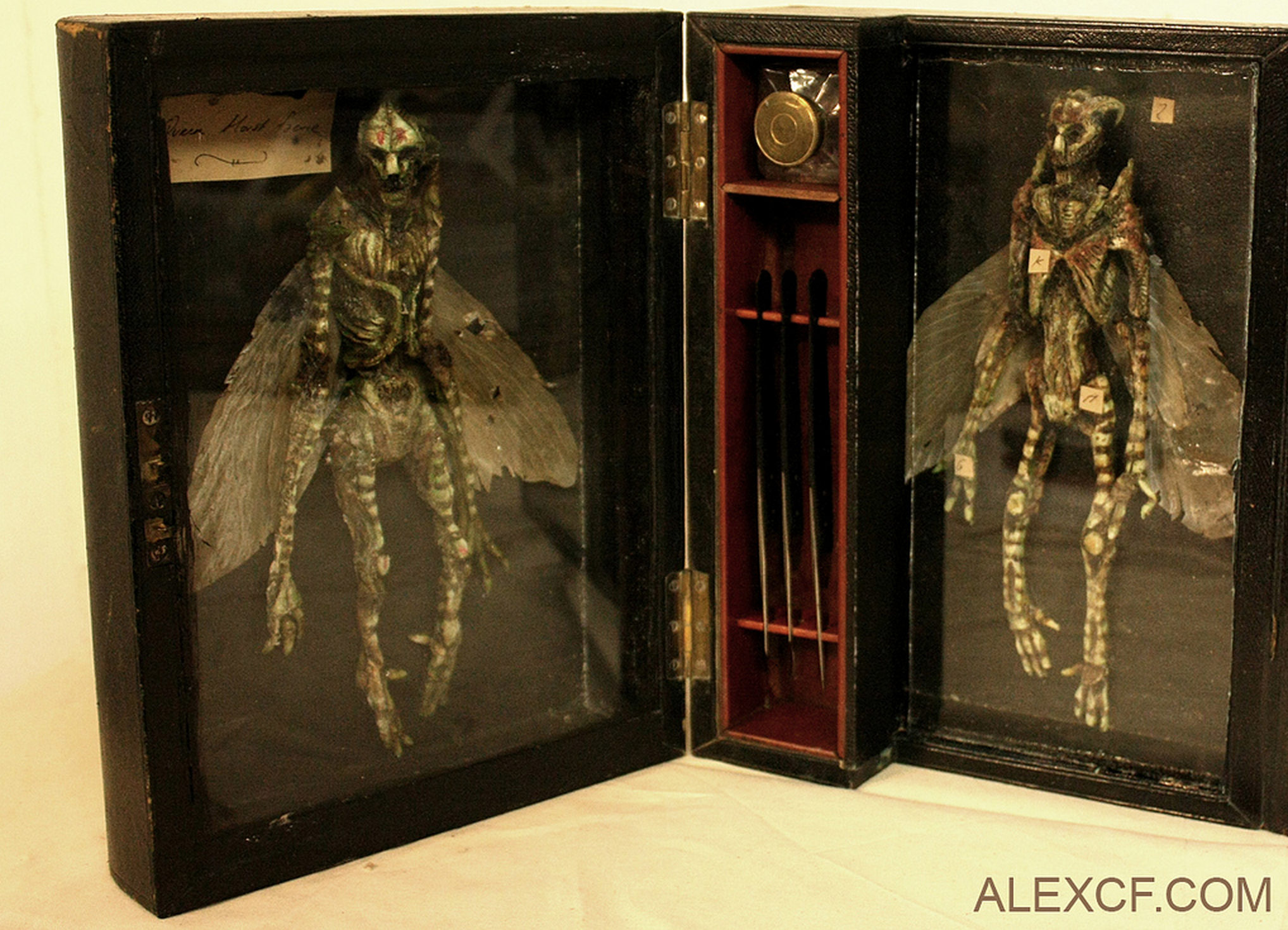All images copyright Alex CF 2014. Please credit and attach a link if used outside this website.
Homomimus Arthropodus (Horst Faerie)
Bipedal arthropod, Carnivore
“A beautiful ebony case housing the queen and king of an aggressive insect-like species of faerie.”
Until recently we believed there to be two separate species of what is broadly known as Faerie – tiny winged bipedal creatures that fall under the broad genus “Homomimus” or “Human mimic”. These are mammalian homomimus or Homomimus Arthropodus, an insect like creature which included Homomimus dentata or Tooth fairy. These two species share no known genetic similarities beyond their stature and aesthetic.
Migrations of invasive species have become something all to common in the 21 st century. Thanks to mass shipping and climate change, species that may have never encountered one another are now forced to share the same soil, with devastating results. The loss of habitat to aggressive species can be found in most countries. yet this is nothing new. The tooth fairy stowed away in the masts of tall ships and devastated the mammalian Faerie population, and it seems, this was not the only encounter between mammalian and arthropod homomimus.
The Horst Fairy, is part of the Homomimu arthopodus family. It stands at around 6 inches tall, its body is segmented like an insect and it sports a tough chitinous exoskeleton. It is a Matriarchal species, the Monarch is identified by two red markings on the forehead which is most noticeable during mating season. She will take one mate at a time, whose entire existence is for insemination alone. Males will die young due to the demands of her sexual appetite. According to Merrylins diaries, Horst Faerie Monarchs are known as “Queen of hearts” - they decapitate the male once he has served his purpose and often the headless corpse is a sign that a new worker faerie will become king. She will release pheromones into the hive, reducing the males to slathering drones making desperate attempts to take up the fatal post. They are helpless in resisting her charms.
This case is very important. The specimens within were found in Boston, Massachusetts whilst searching for Homomimus Dentata around 1862. Merrylin was aware that some insect species of Faerie had been introduced to America via trading and he wished to plot their spread and affect on native species. This case does not only display a complete Monarch and her king, but something very unique. The third specimen, although in a state of decay, is completely unique. Merrylin writes –
“To all intents and purposes I thought this to be the runt of the litter. Horst faerie have elaborate head carapaces but this individual resembles the Mammalian faerie species, yet we see the telltale chitinous green upon the limbs and chest. I dissected the poor fellow, and to my surprise, I found vertebrate osteology, a malformed spinal column and rib cage. At first i was very confused by this individual yet it soon became apparent that I was looking at the result of interspecies breeding.”
Merrylin was fascinated by this as it seemed almost impossible for these creatures to breed. In his many attempts to find other examples of this phenomena, only one or two were ever found. None had reached maturity. Merrylin suggests in later notes that for this event to occur, they two species of faerie may indeed have a common ancestor. More research will need to be carried out.








